Traffic and roads are the lifeblood of contemporary countries and cities. Since ineffective traffic planning can result in a sharp rise in accident death rates, community disconnection, environmental pollution, and even obesity, the efficiency of the entire country depends on it.
The transportation sector is an intricate system that is influenced by a wide range of external factors, including human error and reaction, accidents, economic conditions, and even the time of day or year.
All of these data points are used by AI to predict the likelihood of various scenarios, creating the framework for well-informed decision-making.
It makes sense that 86% of public transportation participants are involved in partnerships to create and implement AI technology projects, according to the UITP International Association of Public Transport.
Computer vision services like object tracking and detection are used in a variety of AI use cases in the transportation sector.
Many other use cases are less spectacular but still very helpful, even though the most visually striking AI applications in transportation are well-known to the general public, such as self-driving cars, autonomous air taxis, or smart highways.
AI systems, for instance, visually monitor intersections and bike/pedestrian routes to identify traffic accidents and improve safety. Additionally, AI in transportation studies traffic patterns to find reasons for congestion or delays.
Let’s examine in more detail how AI is used in transportation to improve our daily lives.
To avoid AI detection, use Undetectable AI. It can do it in a single click.
Table of Contents
Top 9 Use Cases of How is AI Used in Transportation
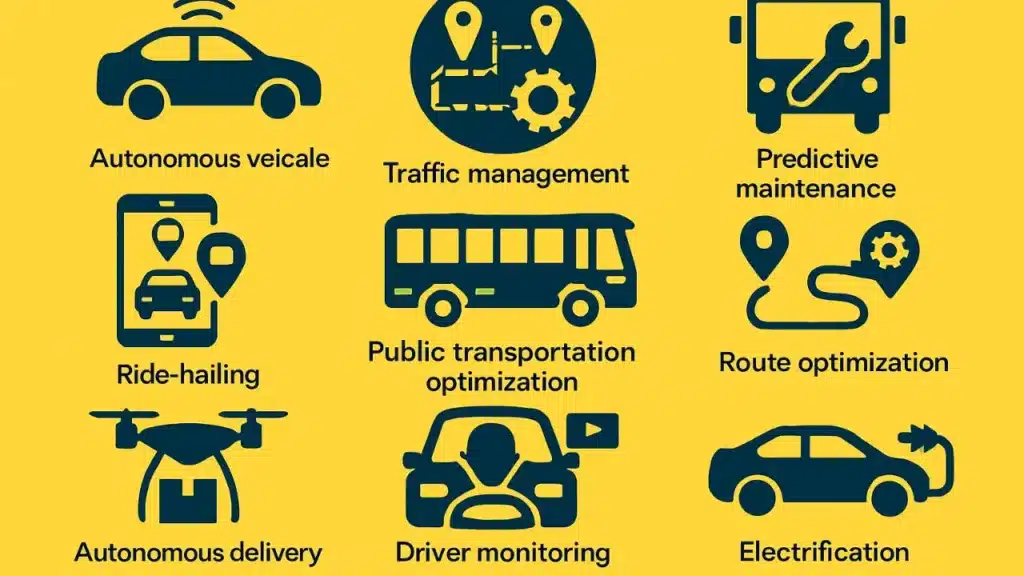
Self-Driving Vehicles
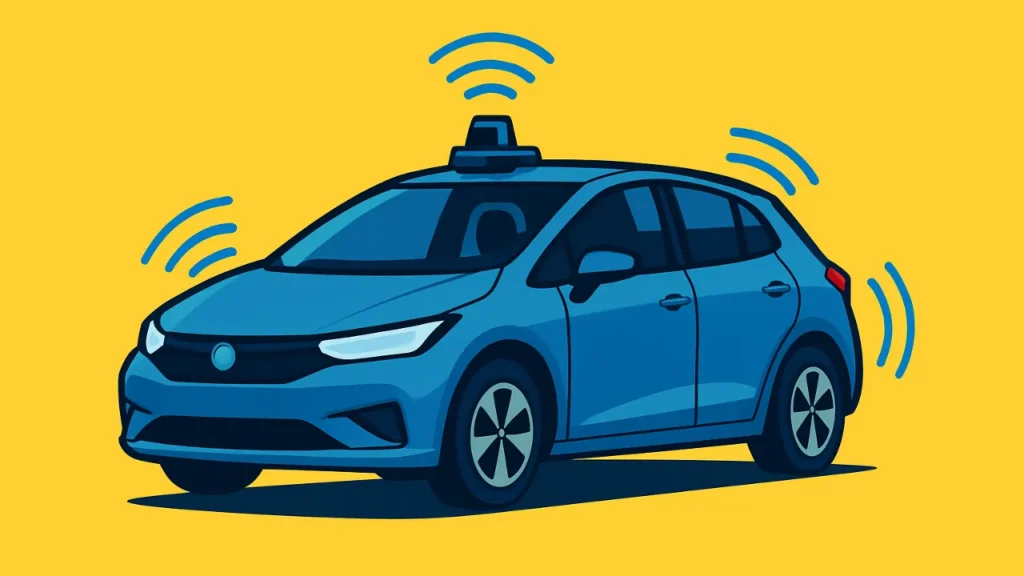
Self-parking, adaptive cruise control, and lane recognition are examples of smart driver assistants that are now standard on many new cars. Some of them, like Hyundai’s cutting-edge cruise control, have been widely used. They do not, however, fully perform the duties of a driver.
Despite the fact that autonomous cars are already a reality, fully autonomous driving is challenging to deploy and necessitates a significant amount of work (and an absurd amount of data). A fatal accident could result from any confusion in the vehicles’ real-time data transmission and processing.
The projects are therefore still not entirely prepared to operate on all roads.
Although some roads in Tokyo will allow autonomous taxis in the spring of 2023, Japanese automakers like Toyota and Nissan have not provided a timeline for the rollout of vehicles or services that use AI for self-driving cars because even their substantial resources have not yet produced the required advancements in sensors and software.
Though mass production has not yet begun, Waymo began developing self-driving cars in the US around 2010. In 2018, it introduced trucks and minivans for testing on public roads in a few states.
Although it clearly takes time to make autonomous vehicles safe for passengers, self-driving cars will become more dependable and widely used as technology advances. Public transportation will be significantly impacted by artificial intelligence with the aid of sensors, cameras, and GPS.
Artificial intelligence (AI) can reduce human error rates and track adherence to safety rules to decrease driving risks.
Pedestrian Detection
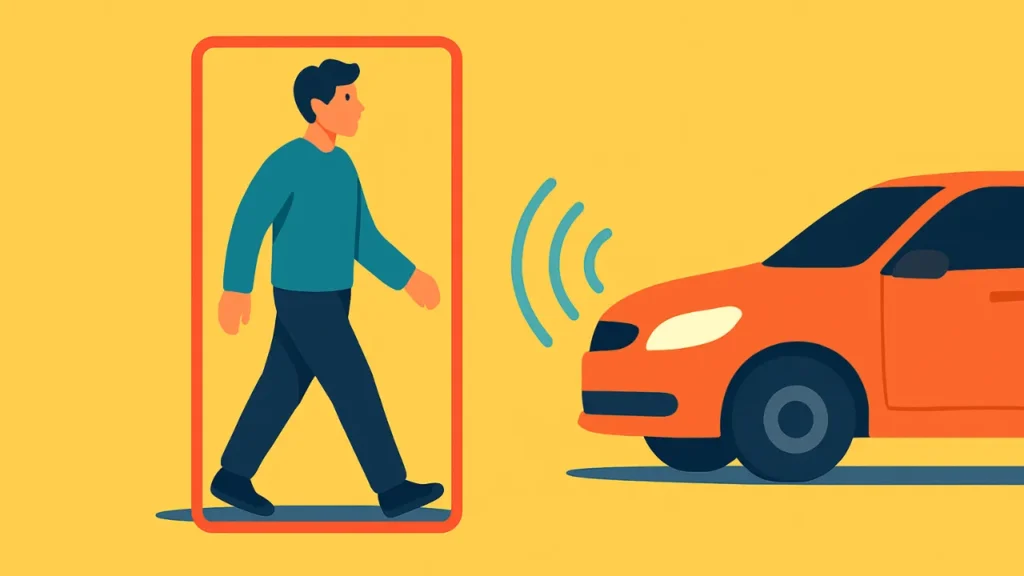
For many drivers, driving at night presents difficulties. AI-powered vehicles can greatly improve the situation since computer systems can recognize pedestrians in images and videos automatically.
Actually, drivers can sleep or converse while operating auto-pilots (or, eventually, autonomous vehicles) without endangering other road users. Because pedestrians can exhibit unexpected behavior, pedestrian detection presents a challenge for computer vision and pattern recognition, offering a variety of edge cases in terms of data.
These consequently result in challenges with behavior prediction, which are one of the biggest risks to the success of self-driving cars. Furthermore, there are still a lot of other issues with training data to be resolved, such as different lighting conditions and the types of postures or attire that pedestrians exhibit.
It will take a long time to gather the vast amounts of training data needed for AI in the transportation sector to overcome these problems.
Management of Traffic Lights and Signs
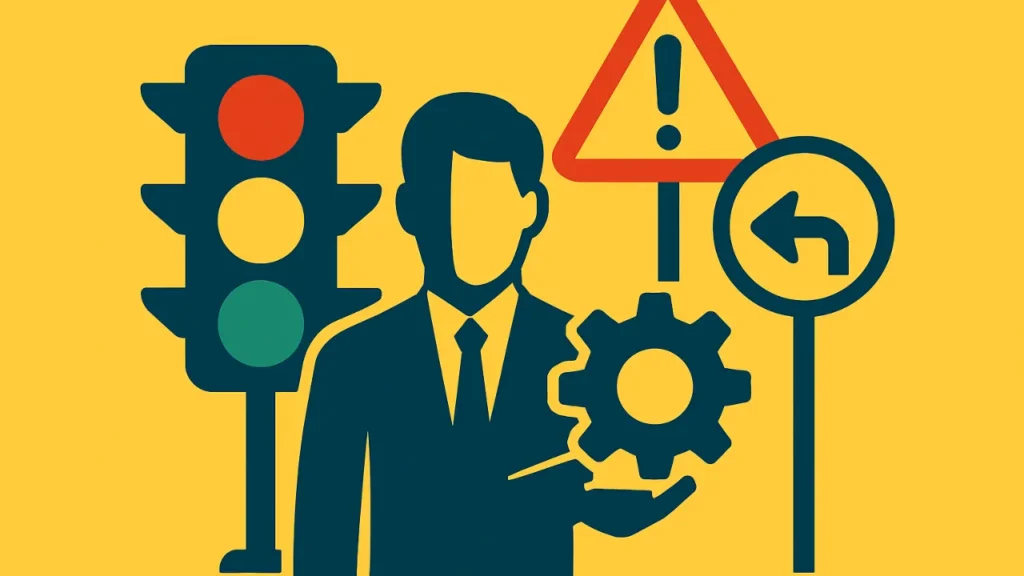
Artificial intelligence should be used to manage traffic in order to make the roads smarter and environmentally friendly. (Imagine getting rid of all those pointless stops and starts!)
AI analyzes, manages, and optimizes vast volumes of data from numerous sensors and cameras placed on roadways through computer vision and machine learning. These data are analyzed by AI and big data systems to identify traffic trends. The pertinent information feeds into intelligent systems that forecast traffic or blockages.
Artificial intelligence uses those inputs to identify and anticipate problems that could cause congestion. Road safety is becoming more and more dependent on technologies like intelligent transport systems and traffic signaling. Traffic light timing and configuration are crucial for this.
For instance, pedestrian safety is increased when pedestrian intervals are increased to indicate “walk” several seconds before the turning traffic receives a green light. By giving pedestrians a head start, this measure increases their visibility and reduces their chance of being struck.
Siemens Mobility’s AI-powered system serves as another illustration. By using cameras to monitor traffic, this reduces traffic congestion by adjusting traffic light patterns in response to current road conditions.
In order to regulate speed, issue lane departure warnings, and communicate with urban traffic control systems, intelligent traffic surveillance and control systems are examples of innovative AI solutions. In the modern world, vehicles communicate with the road infrastructure and with one another.
The data from these interactions can be shared with traffic managers due to this interaction, which is known as Cooperative Intelligent Transport Systems (C-ITS).
Weather-related skid warnings, collision-avoidance systems, distance sensing, improper driving detection, emergency braking warnings, and optimal intersection management are all accomplished through vehicle-to-vehicle and vehicle-to-infrastructure communication channels.
Travel Time Predictions
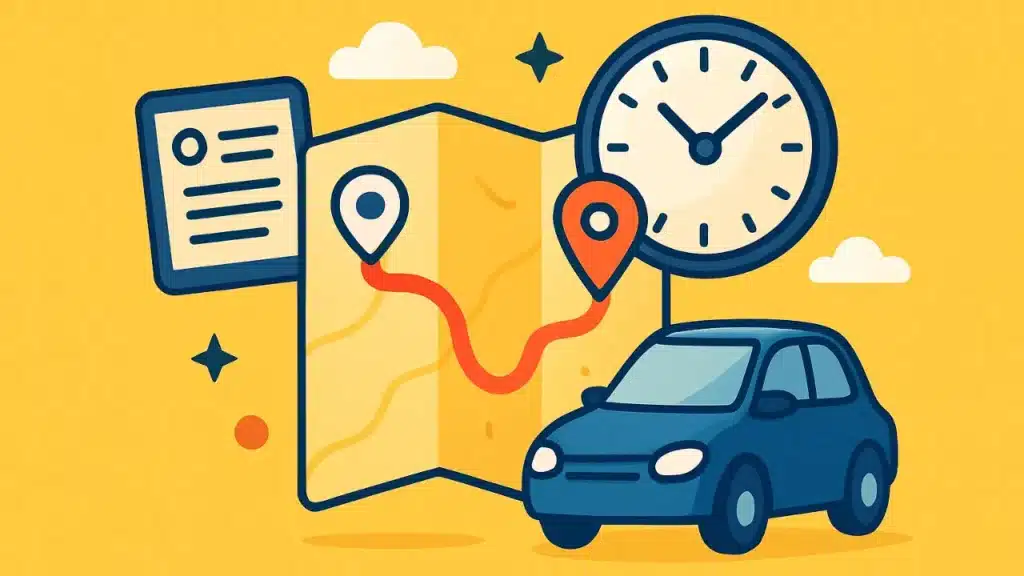
Another major issue with transportation, particularly air travel, is delays. Such delays could cost up to $32.9 billion in the United States alone, according to UC Berkeley. Implementing AI offers a solution to reduce the expense of flight delays while also improving the unfavorable experiences of passengers.
AI systems for aviation can reduce waiting times for passengers because they can forecast the short-term effects of nearly anything, from stormy weather to a specific number of technical problems that could cause flight delays.
By analyzing historical records, weather data, and real-time aircraft data, artificial intelligence (AI) driven by machine learning (ML) uncovers hidden patterns that give the aviation industry (and passengers) important information about potential delays or cancellations.
Nevertheless, computer vision systems can also predict delays by sporadically monitoring buses, trucks, and cars.
In contrast to many other data collection technologies that provide numerical outputs, the cameras are also reasonably simple to deploy and maintain, and videos provide a clear and understandable image for people to review.
AI also improves arrival time predictions (ETAs) to be as close to actual results as possible by utilizing real-time signals and historical data to train machine learning (ML) models. Uber developed a routing engine, for instance, that makes use of map data and real-time traffic measurements.
By adding up the travel times for each segment along the optimal route between two locations, it forecasts an ETA. In order to obtain observed results in the real world, the machine learning model then forecasts how much time should be added to the routing engine ETA results.
Road Condition Monitoring

In the United States alone, pothole damage costs drivers over $3,000,000,000 annually. Unfortunately, potholes do not go away as quickly as people would like and appear to appear overnight, even though the driving public makes every effort to pressure governments to take action.
But computer vision in transportation by detecting changes in the surface of the roads, AI is able to evaluate the surrounding infrastructure and successfully identify road defects. In order to improve road maintenance, computer vision algorithms can determine the extent of road damage and notify the appropriate authorities.
After gathering image or video data, the algorithms process it to identify cracks and even automatically categorize them. Furthermore, these algorithms will soon adopt automated preventative maintenance and targeted rehabilitation strategies without the need for human intervention.
Stated differently, Automated Pavement Distress (PD) detection increases road safety, saves time and money, and provides real-time updates for quicker repairs, all while improving the efficiency of road maintenance allocation.
For instance, EyeVi uses machine learning and computer vision in transportation to address the issue of damaged road surfaces.
Parking Management Driven by Computer Vision
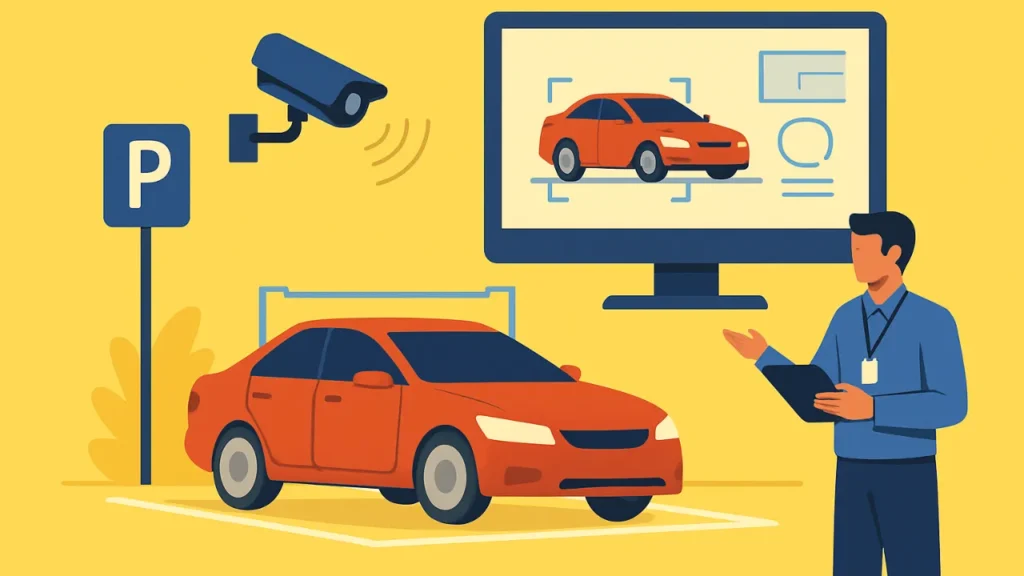
Even Nobel laureates have experienced the frustration of spending hours looking for parking.
“The universe is expanding, but where do I park?” jokes some of them and that the best benefit of the prestigious award is that priceless parking space that is reserved for all time.
Unfortunately, most people find parking to be a hassle. In addition to being harmful to the environment, it is typically stressful and causes traffic jams. Management of parking can be redesigned with computer vision. In order to keep an eye on any available spots, parking lots should first have sensors that measure the distance between cars.
But since a sensor like that can’t scan license plates, it’s time to use computer vision, parking meters, and cameras. Automatic number-plate recognition is used by artificial intelligence to identify specific parked cars and calculate how long they have been parked for.
The map of all available and soon-to-be-available slots can then be updated in real time by the system using those data. Drivers can then save a great deal of valuable time by using the map on their mobile device to locate empty parking spots with low occupancy levels.
Law Enforcement and Automatic Detection of Traffic Incidents
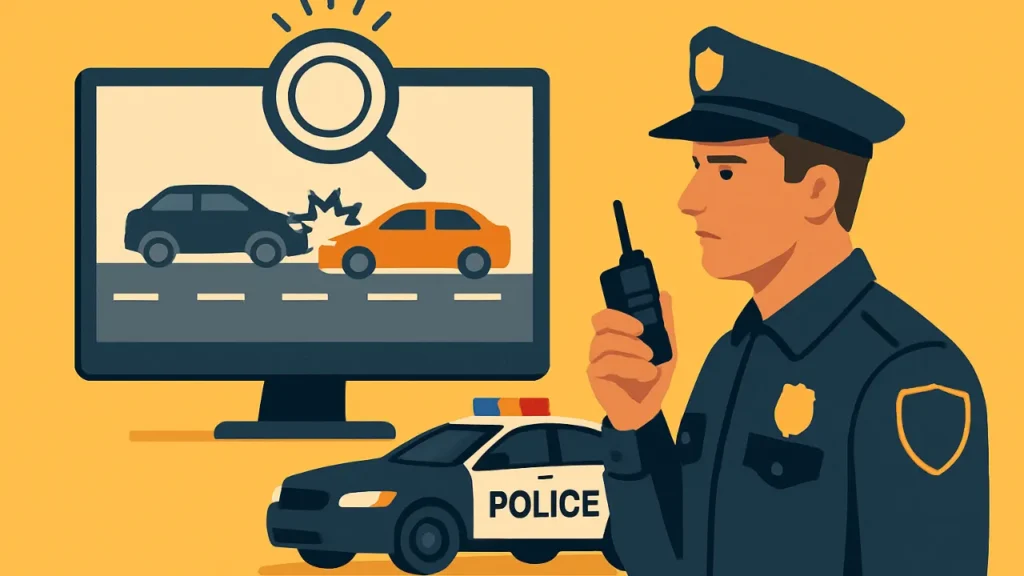
Traffic incident detection is one of the most extensively studied areas of artificial intelligence in the transportation sector because of its significance. The main objective is to guarantee that traffic flows are not severely disrupted.
The most effective tool for monitoring road networks and intersections for a considerable amount of time was video surveillance. Because it provided a view of traffic in real time, authorities were able to react to incidents as soon as possible.
However, the video footage was viewed by humans, who had limited capabilities. One person cannot effectively monitor several cameras at once, which leads to incidents going unnoticed for critical periods of time. Automatic incident detection takes over in this situation.
The computer vision system continuously monitors every camera in the video, looking for incidents, lines, and odd traffic situations. An AI-enabled user interface, for example, is offered by Motorola Solution to guarantee that important events are not overlooked.
Furthermore, this AI in the transportation sector can even forecast impending traffic jams. For instance, MindTitan developed a traffic accident prediction model in partnership with the Estonian Road Administration. The system makes use of information about crimes, mishaps, weather, police patrol locations and timing, etc.
The forecasting model ought to forecast the likelihood, seriousness, and underlying cause of traffic accidents based on these data. AI can therefore decrease traffic and increase road safety. An AI project created in Bellevue, Washington, in the United States, serves as another example.
Researchers found the most accurate predictors of crash locations based on more than 5,000 hours of video footage. The AI model finds traffic hot spots in the city’s network by analyzing data from 360-degree, high-definition traffic cameras placed at 40 intersections.
Traffic volume, vehicle speed, and near-crash traffic indicators are all recorded by the cameras. Law enforcement is another domain where AI is being used in transportation. In the past, the police usually got involved after an accident happened because cars move quickly and human observation was used to identify dangerous driving.
AI, however, has solved this issue. By identifying drivers who are intoxicated or texting while operating a motor vehicle, intelligent systems enable law enforcement to stop accidents before they occur. Furthermore, those intelligent systems are able to forecast where police patrols should be stationed.
For the Estonian Police and Border Guard Board (PBGB), MindTitan is developing an artificial intelligence (AI) system that can predict emergency calls based on a variety of factors, including past issue and emergency call data and local weather conditions.
Automatic Recognition of License Plates

Computer vision systems that analyze footage from street and highway cameras are used in automated license plate recognition to identify a license plate number while concurrently recording the time, date, and location.
After that, those images are processed by a central server that uses optical character recognition (OCR) to identify the letters and numbers. Police typically use it to assist in the location of automobiles.
For example, license plate recognition will assist in determining whether a car was present at a crime scene at a specific time in a matter of seconds. Additionally, by identifying travel patterns, this technology can help with parking, traffic, or toll management.
Automated license plate recognition, however, is frequently viewed as controversial. Automated license plate recognition, according to some, may be able to uncover personal details about a driver. Therefore, it makes sense to use this technology with caution.
Driver Monitoring

According to the government, up to 633 people died in crashes caused by drunk driving in the USA alone in 2020. According to the UK government, “one of the main areas of driver behavior that needs to be addressed” is driver fatigue. Despite the role that personal responsibility plays, these alarming statistics show that it is insufficient.
Regretfully, merely urging drivers to exercise greater caution won’t work. Many drivers are reluctant to acknowledge their weariness or even deny that it will affect their ability to drive. Businesses use computer vision and install video equipment in car cabins to improve monitoring and promote safer driving.
The technology uses pose estimation and face detection to check for things like emotional recognition and drowsiness. The AI can stop hundreds of collisions and fatalities each year by warning drivers to stop and rest, making the road safer for all users.
Detection of driver distraction may trigger the same warning. The AI system can instantly notify the driver of any disruption, such as when using a mobile device, and request that they maintain their attention on the road.
The AI system is also able to identify other distractions, like conversing with a passenger in the backseat, which can cause the driver to lose focus without even realizing it.
Conclusion: How AI is Used in Transportation?
From more comfortable and convenient traffic management and passenger safety to reducing carbon emissions, artificial intelligence in the transportation sector can improve daily life in many ways. We can process complex data and automate time-consuming tasks, like continuous traffic flow monitoring, due to AI capabilities.
Road users can therefore be confident that traffic is monitored with extraordinary care to avoid issues and improve safety. AI-powered systems in the aviation sector can boost revenue generation through intelligent fleet management by uncovering hidden patterns in traffic data based on forecasts of inclement weather and delays.
It is crucial to examine the real-world problem you wish to solve with a group of machine learning specialists, though, because the transportation industry is a complicated one with numerous influencing factors.
FAQs: How is AI Used in Transportation?
What are the applications of AI in transportation?
AI applications in transportation include traffic management systems, fleet management, and autonomous vehicles. These applications help improve road safety, improve traffic flow, and optimize logistics.
How does AI improve safety in public transportation?
AI improves safety in public transit by using real-time data to predict traffic conditions and reduce congestion. AI algorithms can analyze patterns to improve road safety and minimize the risk of accidents.
What are the benefits of AI in the transportation industry?
The benefits of AI in transportation include improved mobility, enhanced operational efficiency, and the ability to make transportation safer and more efficient. AI helps transportation companies to leverage data for better decision-making.
How is AI transforming logistics?
AI is transforming logistics by optimizing supply chain management, predicting demand, and automating processes. This integration of AI in logistics leads to improved transportation and improved overall efficiency.
What is the future of AI in transportation?
The future of AI in transportation is promising, with advancements in AI technologies that empower transportation systems to dynamically adjust to changing traffic conditions, resulting in a more efficient transportation landscape.
Can AI reduce congestion on roads?
Yes, AI can reduce congestion by analyzing traffic flow and optimizing traffic management systems. AI contributes to better route planning, which helps in minimizing travel time and improving overall traffic conditions.
How does AI impact public transportation?
AI impacts public transportation by improving service reliability, enhancing user experience, and optimizing routes. The adoption of AI technologies enables transportation networks to operate more efficiently.
What role does the Department of Transportation play in AI integration?
The Department of Transportation plays a crucial role in implementing AI solutions and promoting research on AI applications in transportation, ensuring that advancements lead to safer and more efficient transportation systems.
What are some use cases of AI in the transportation sector?
Use cases of AI in the transportation sector include autonomous vehicle navigation, predictive maintenance for vehicles, and smart traffic signals that adapt to real-time traffic flow, thereby improving overall transportation efficiency.
How can AI improve overall road safety?
AI improves overall road safety by providing predictive analytics that identify potential hazards and suggesting preventive measures. By analyzing historical data, AI systems can improve transportation safety protocols effectively.
Read Also >>> Difference Between AI and Algorithm


